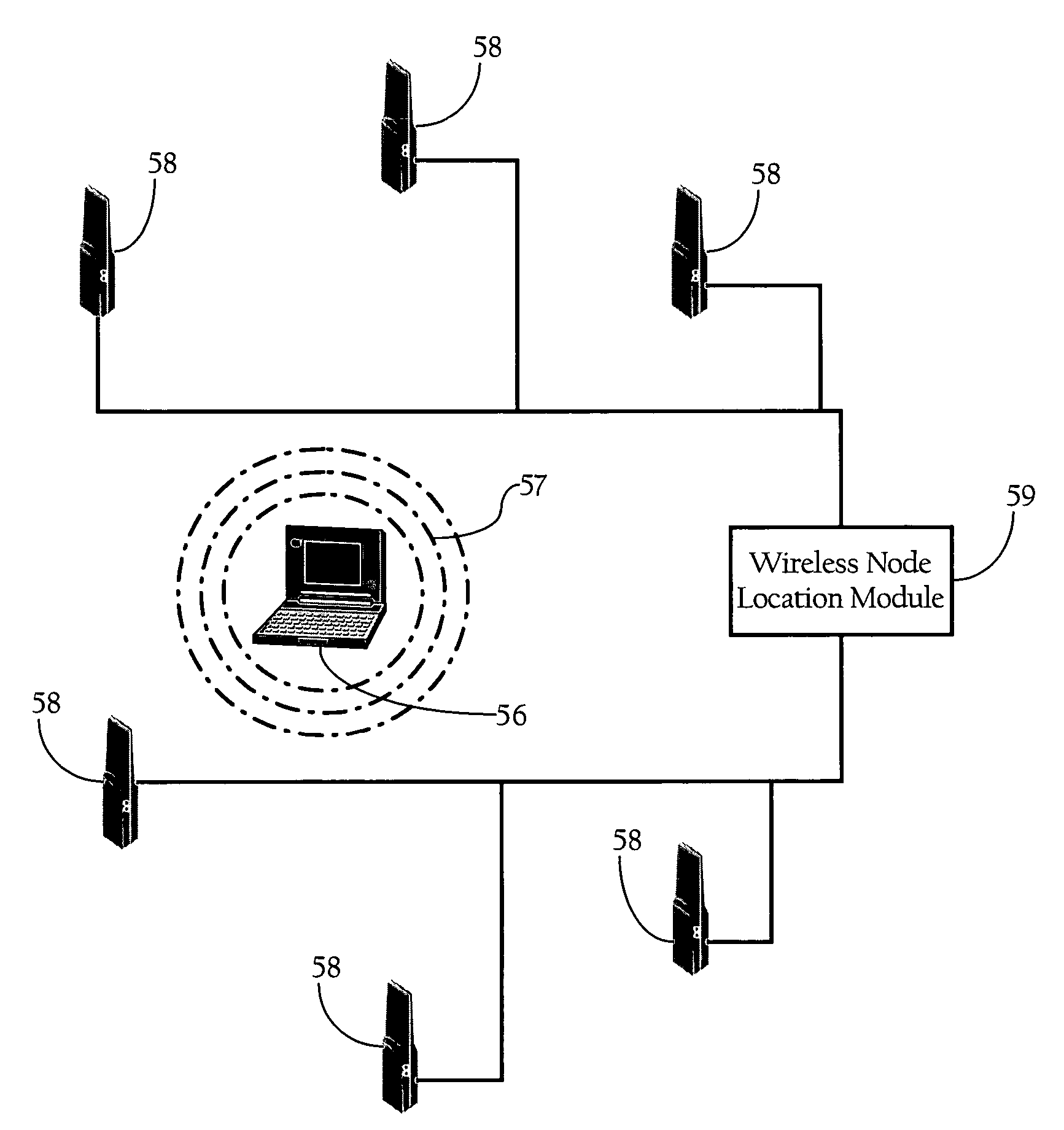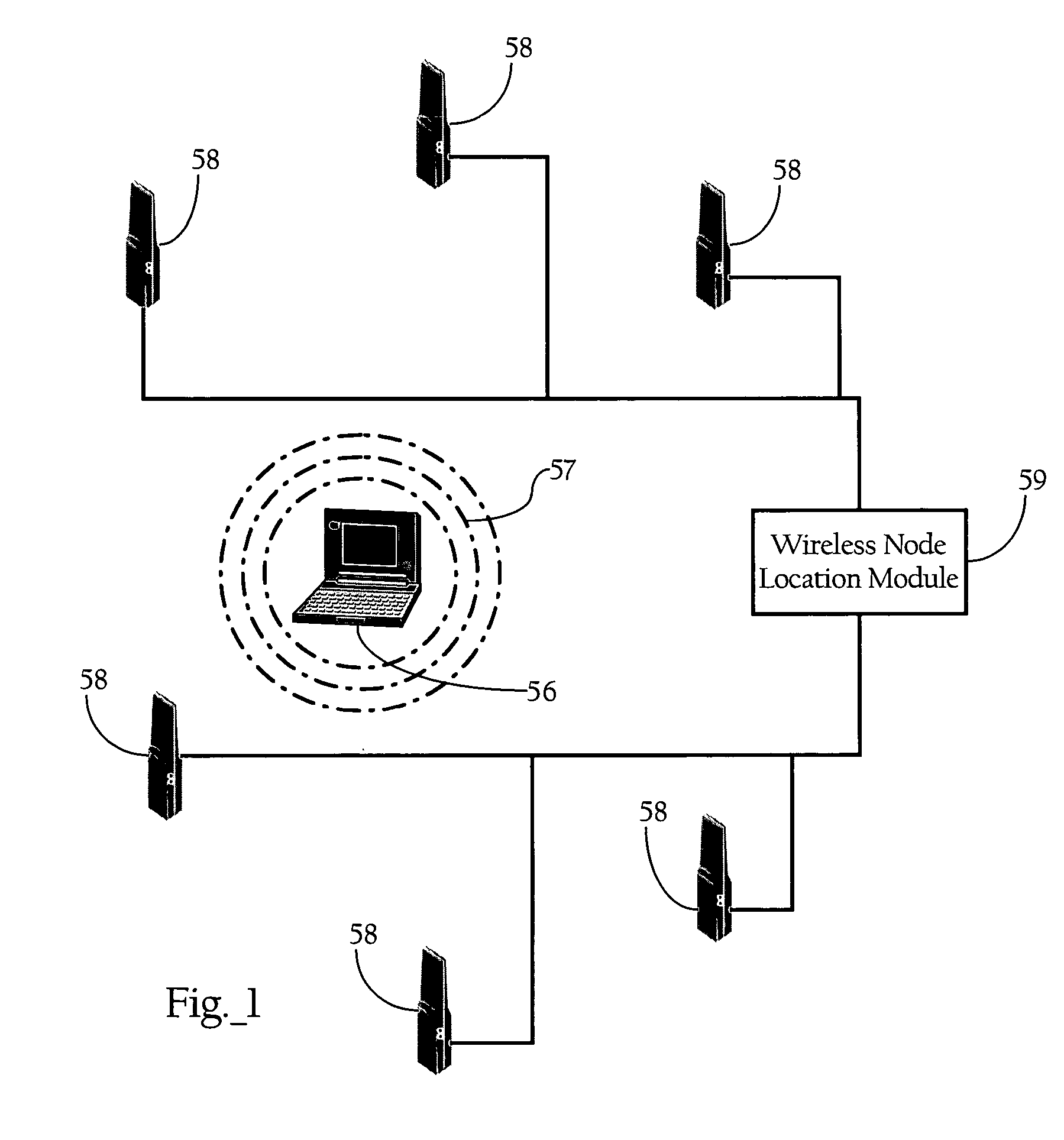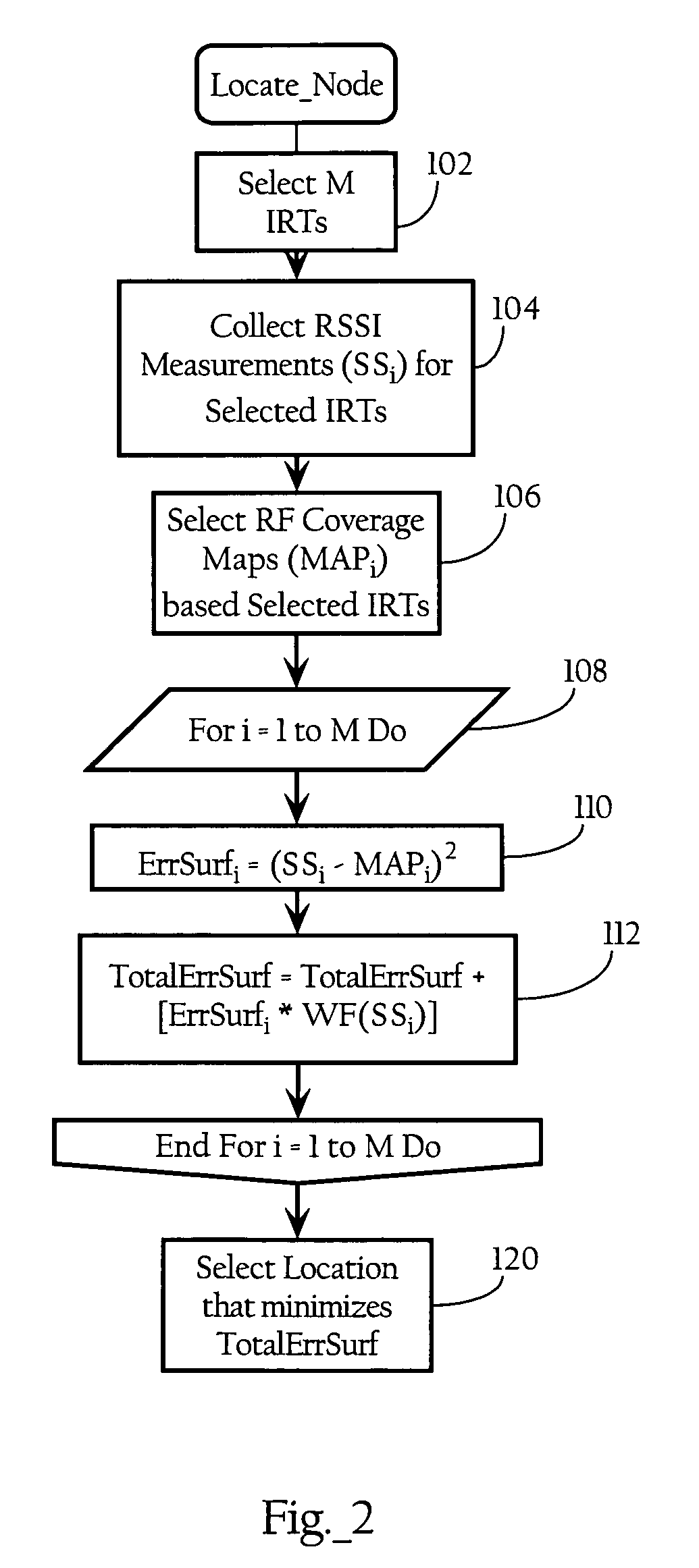Location of wireless nodes using signal strength weighting metric
a wireless node and signal strength technology, applied in the direction of navigation instruments, wireless commuication services, instruments, etc., can solve the problems of certain difficulties in locating wireless nodes, weakening the magnitude or power of radio signals as they travel from their source, and reducing the accuracy of location with the error
- Summary
- Abstract
- Description
- Claims
- Application Information
AI Technical Summary
Benefits of technology
Problems solved by technology
Method used
Image
Examples
Embodiment Construction
A. Wireless Node Location and Signal Strength Weighting Metric
[0028]FIG. 1 illustrates the basic operating components of the wireless node location mechanism according to an implementation of the present invention. As FIG. 1 shows, the wireless node location mechanism includes a wireless node location module 59 and a plurality of infrastructure radio transceivers 58 disposed throughout a physical space. One skilled in the art will recognize that the system depicted in FIG. 1 represents an example of the basic components of the invention and is mostly for didactic purposes. As discussed more fully below, the functionality generally denoted by infrastructure radio transceivers 58 and wireless node location module 59 can be integrated into a variety of systems, such as wireless systems dedicated for location of wireless nodes, or WLAN or other wireless network systems.
[0029]Infrastructure radio transceivers 58 generally comprise at least one antenna, a radio transmit / receive unit, and ...
PUM
 Login to View More
Login to View More Abstract
Description
Claims
Application Information
 Login to View More
Login to View More - R&D
- Intellectual Property
- Life Sciences
- Materials
- Tech Scout
- Unparalleled Data Quality
- Higher Quality Content
- 60% Fewer Hallucinations
Browse by: Latest US Patents, China's latest patents, Technical Efficacy Thesaurus, Application Domain, Technology Topic, Popular Technical Reports.
© 2025 PatSnap. All rights reserved.Legal|Privacy policy|Modern Slavery Act Transparency Statement|Sitemap|About US| Contact US: help@patsnap.com



